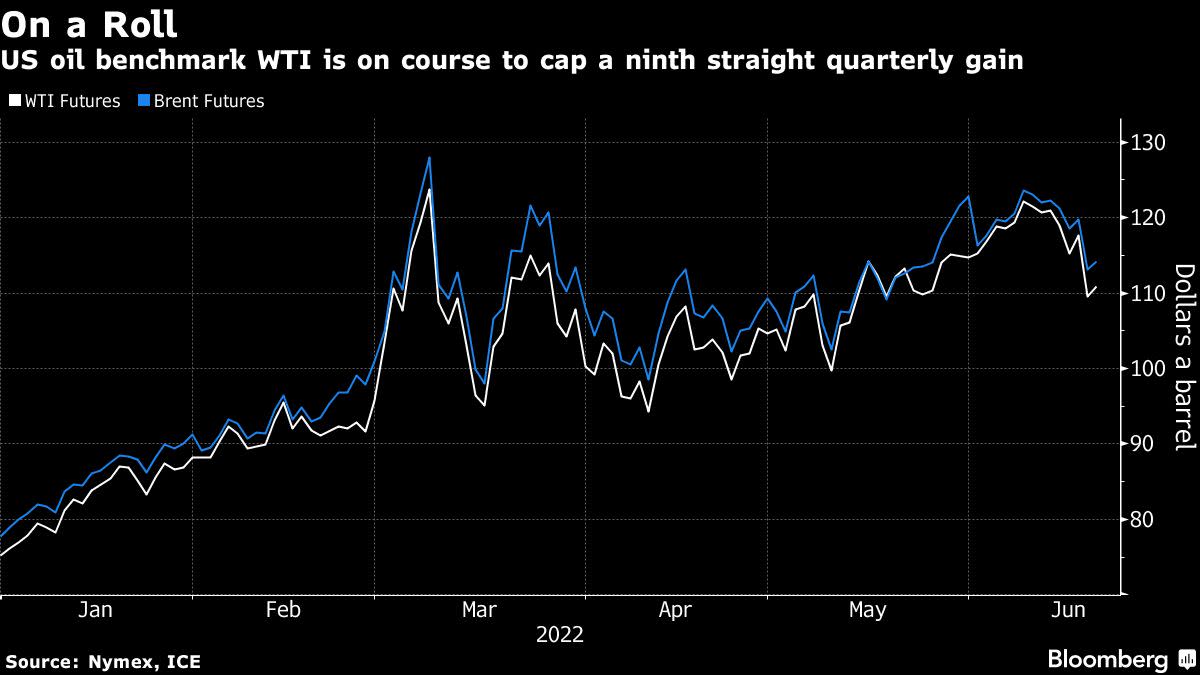
(Bloomberg) — Oil steadied in Asia — after plunging almost 7% on Friday — as traders weighed prospects for higher near-term demand against concerns that aggressive US monetary tightening will lead to a recession.
West Texas Intermediate traded above $109 a barrel after tumbling by the most since early April last week as escalating worries about the pace at which the Federal Reserve is raising rates rattled financial markets. At the weekend, US Energy Secretary Jennifer Granholm warned drivers of a “continued upward pull on demand,” and the likelihood of sustained high gasoline prices.
Oil has soared in 2022 as the war in Ukraine disrupted supplies just as consumption increased following the pandemic. Despite the recent pullback, the US benchmark remains set for a record-setting ninth quarterly gain, contributing to rampant inflation. Last week, the Federal Reserve increased interest rates by 75 basis points to tame price gains, and leading policy makers have vowed to keep going until inflation starts to ebb.
Despite economic worries roiling the broader financial markets since the Federal Reserve’s hike, supply concerns will continue to drive oil as long as the Ukraine war goes on, said Vandana Hari, founder of Singapore-based analysis firm Vanda Insights. A bounce in prices may lie ahead, she added.
While the US projected in its June short-term outlook that local pump prices will average about $4.27 a gallon in the third quarter, the forecast could be “completely upended” by world events, for instance if the European Union were to fully cut off Russian oil, Granholm told CNN’s “State of the Union.”
Investors will hear more about the Fed’s assessment of the economy and the bank’s likely next steps when Chair Jerome Powell testifies before lawmakers later this week. On Sunday, Treasury Secretary Janet Yellen warned that high prices are likely to stick through 2022 while growth slows.
Oil markets are in backwardation, a bullish pattern in which near-term prices trade above longer-dated ones, indicating tight supplies. Brent’s prompt spread — the difference between its two nearest contracts — was $2.72 a barrel in backwardation on Monday compared with $2.56 a month ago.
Interruptions to supplies outside Europe have also acted to support oil prices this year. Libya has little chance of holding elections this year, the parliament-backed prime minister said, raising the prospect of further uncertainty for the nation’s oil industry. Fathi Bashagha, who’s engaged in a standoff with Abdul Hamid Dbeibah, predicted political upheaval is likely to continue through 2022.
©2022 Bloomberg L.P.